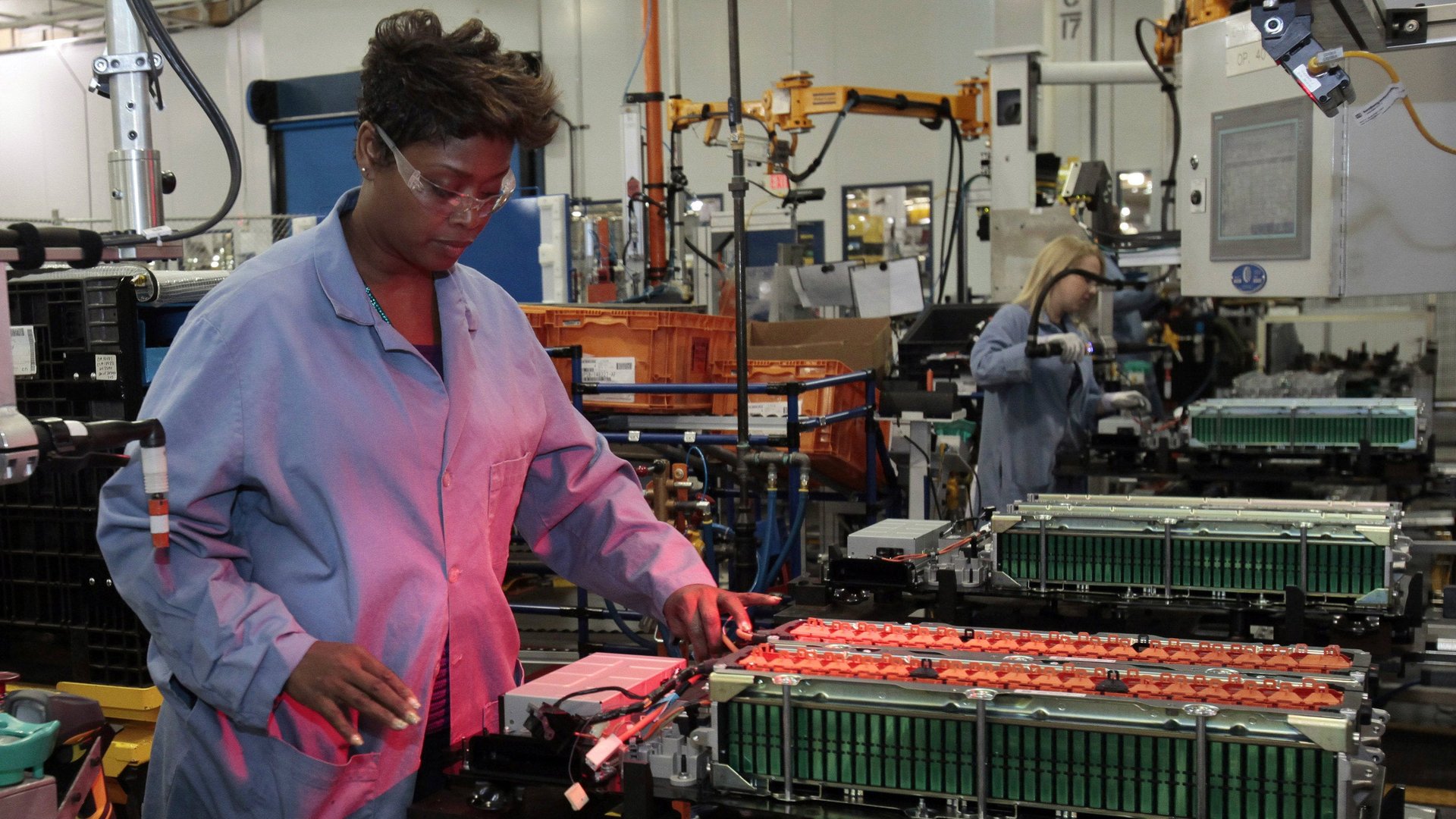Three ways to measure whether Trump is delivering on his boldest labor market promises
Donald Trump famously claimed in a campaign speech that “I am going to be the greatest jobs president that God ever created.” Six weeks into his presidency, we can begin to track his performance in earnest.


Donald Trump famously claimed in a campaign speech that “I am going to be the greatest jobs president that God ever created.” Six weeks into his presidency, we can begin to track his performance in earnest.
It may seem bit premature, but numbers released today about the job market in February may have been affected by Trump’s presence and policy goals. Trump himself already claims some credit for January’s strong job growth, which was based on data collected before his inauguration.
In February, the first full month of Trump’s term, 235,000 jobs were added to the US economy, beating expectations. More people joined the labor market and, even still, the unemployment rate fell from 4.8% to 4.7%.
In addition to creating millions of new jobs, there are three specific shortcomings in the labor market that the Trump administration has promised to address: The plight of those who want a job but gave up looking for one, the loss of manufacturing jobs, and persistently high African-American unemployment. On these points, the president’s first month brought mixed results.
Prime age participation rate
Trump has repeatedly complained about the “phony” official unemployment rate. He takes issue with the number because it doesn’t take into account people who want a job but have stopped looking for work. The administration is considering a change that would include some of these people in the rate that receives the most emphasis when the stats are published.
Trump says that his policies will inspire the unemployed to restart their job searches. If he succeeds, it would raise the ranks of 25-to-54 year-olds with a job or actively looking for work—referred to as the “prime age labor force participation rate.” This number has been falling for many decades—there is a healthy debate about the root causes.
In February, prime age labor force participation edged up by 0.2%, from 81.5% to 81.7%. That’s the right direction, but mostly follows the trend established in the last year and a half of Barack Obama’s final term.
Manufacturing jobs
Perhaps no promise was more central to Trump’s campaign than his pledge to bring back manufacturing jobs.
If Trump succeeds at creating factory jobs he will be bucking a long-standing trend. The president claims he can bring jobs back by renegotiating trade deals. Economists are skeptical.
February was a good start, with 28,000 manufacturing jobs created, the best result for the sector in over a year. Yet, again, this sort of monthly growth wasn’t unheard of during Obama’s final term.
Black unemployment
Trump is obsessed with black unemployment. He tweeted about it several times long before becoming a presidential candidate, and during his campaign misleadingly said unemployment for black youth is 59% (the correct number is less than half of that).
Over the past decade, the gap between the black unemployment rate and the national average has ranged between 3% and 7%. Trump believes he can close this gap. He promised a “new deal for black America” that includes policies to improve safety, education, and job opportunities in majority black communities.
The February numbers look like a step backwards. While estimates of the unemployment rate for white, Asian, and Hispanic Americans all fell, the estimate for African Americans rose in February, from 7.7% to 8.1%. That widened the gap with the national average to 3.4%, from 2.9%.